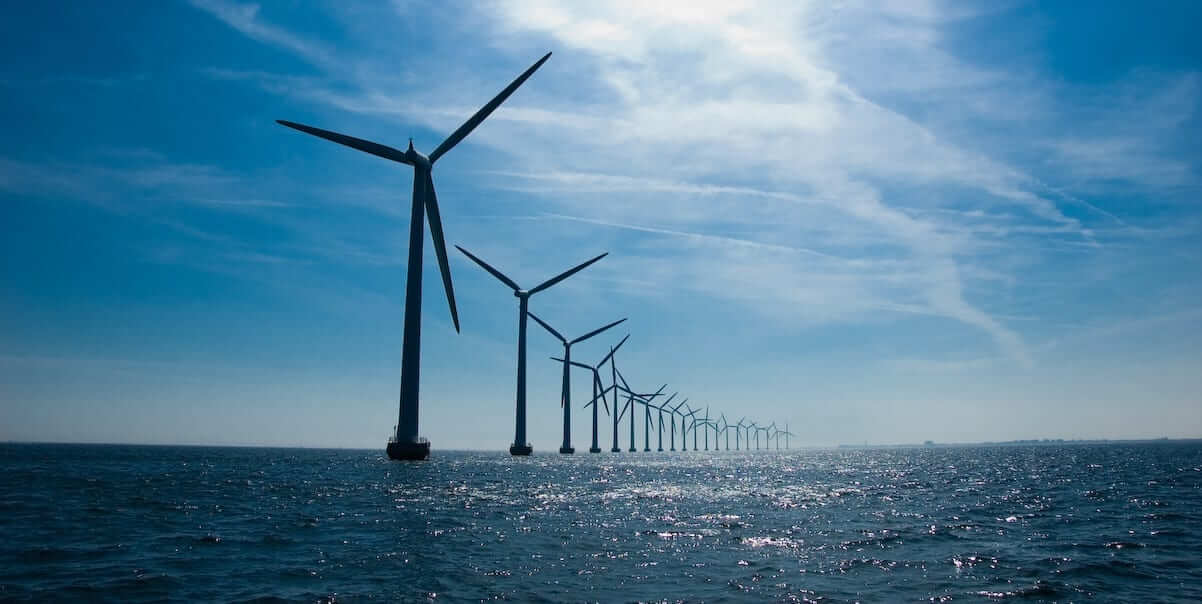Guest blog: Ocean planning & offshore wind energy
Dr. Sandra Whitehouse is a consultant who serves as the Senior Policy Advisor for the Ocean Conservancy, where she focuses on the Smart Ocean Planning, Ocean Acidification, and Trash Free Seas programs.
Offshore wind energy potential in the U.S. is enormous, but as we’ve seen with early efforts, so are the challenges to making offshore projects a reality.
Over the past decade the demand for limited space in coastal waters has increased dramatically, both from traditional uses such as commercial fishing, recreation, port operations, shipping, aquaculture, and military exercises, as well as from new uses including offshore energy. The offshore wind industry in particular faces unique challenges to successfully siting, designing, and permitting projects. In the past, offshore wind developers have been left largely on their own to resolve potential siting and use conflicts. This status quo approach is fundamentally inefficient, requiring developers to “reinvent the wheel” for each project, potentially discovering problems well down the road into the development process. Ocean planning offers a new approach, providing wind developers with a tool to more effectively identify and resolve siting and development conflicts early on, saving critical time and money in the process.
What is ocean planning?
Ocean planning (also known as marine spatial planning) is a tool to gather and analyze data and information about what is happening in the ocean and how it may change in the future, and to bring together government, industry, and community stakeholders to resolve conflicts before they arise. It can provide the offshore wind industry with both better data and information about current ocean resources and uses in areas under consideration for wind projects, as well as provide a simpler way to facilitate collaboration with government agencies, broad groups of maritime industries, and the public to understand, evaluate, assess, and site projects. Several states have already completed ocean plans for their waters, and ocean planning for federal waters in the Northeast and Mid-Atlantic regions is scheduled for completion by 2016.
National success: Block Island Wind Farm
The benefits of coordinated ocean planning were showcased this summer as the nation’s first offshore wind farm began construction off the coast of Block Island, Rhode Island. In a relatively short time for a major offshore project, the Block Island Wind Farm went from concept to construction, thanks in part to a rigorous, proactive state led ocean planning process for Rhode Island waters. In 2008, the Rhode Island Coastal Resource Management Council initiated the Ocean Special Area Management Plan (Ocean SAMP), collecting valuable information that improved the understanding and management of state and federal waters and identifying areas suitable for offshore renewable energy projects.
The Ocean SAMP identified and mapped out everything from who, where, and how people use the waters to the importance of the area to birds and migratory mammals. The Ocean SAMP stakeholders provided extensive input to the plan, including fishermen, port operators, recreational users, renewable energy developers, and the general public. This process significantly increased the efficiency of state and federal permitting because areas where conflicts could arise had already been identified and resolved with input from multiple interested parties. This data-driven, stakeholder led process is understood to have reduced years of permitting, avoided potential litigation for the Block Island project team, and fostered positive working relationships in the region.
Next steps: Regional ocean planning
As ocean planning has produced significant benefits for the offshore wind industry in Rhode Island, the ongoing regional planning efforts in the Mid-Atlantic and Northeast are working toward similar results in federal waters. Since state jurisdiction typically extends only 3-miles offshore, regional planning that includes federal waters is important for many ocean users who operate further offshore.
For the past few years, regional planning bodies (RPBs) in the Northeast and Mid-Atlantic have been working diligently to produce regional ocean plans with similar rigor for sound science, strong stakeholder engagement, and increased permitting efficiency as the Ocean SAMP in Rhode Island. Both RPB’s expect to release draft regional ocean plans in the first half of 2016. For both regions, recognition of new and expanding ocean uses – especially offshore renewable energy resources – are prominent guiding principles. Both regions have developed data portals (NE and Mid-A) for the sharing of data and information. Each region is also working to develop inter-jurisdictional coordination plans as part of their ocean plans, to increase efficiency, communication, and data sharing among ocean users and permitting agencies.
Continued engagement: Offshore wind energy into the future
The offshore wind energy industry has already seen the benefits that smart, coordinated ocean planning efforts can produce. As the Mid-Atlantic and Northeast regions work to complete their regional ocean plans, the industry should continue its engagement to ensure these groundbreaking efforts in federal waters are a success. Working alongside a broad range of stakeholders to plan for our ocean creates open dialogue, increased understanding, and forward movement for everyone involved.
###
AWEA Offshore WINDPOWER Conference & Exhibition
Dr. Whitehouse will speak during AWEA Offshore WINDPOWER Conference & Exhibition, Sept. 29-30 in Baltimore. She will be joined by other experts including Abigail Ross Hopper, Director, Bureau of Ocean Energy Management (BOEM), Department of the Interior; Jose Zayas, Director, Wind and Water Power Technologies, Department of Energy; and Tom Kiernan, CEO, American Wind Energy Association. There’s no better place to learn about recent developments in U.S. offshore wind, how stable policy can help drive the offshore wind industry forward, and how technological advancement helps the industry scale up.





